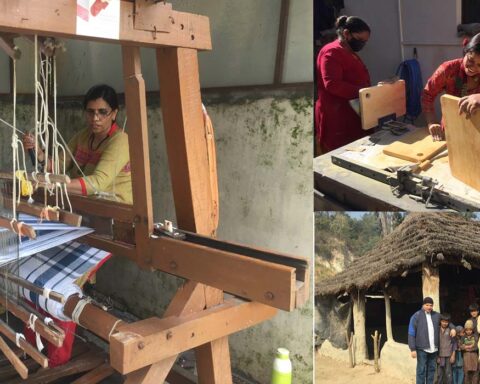Developments that preceded and accompanied the breakout of violence in north-east Delhi in February 2020 were the outcome of several interlocking factors, reveals a report on the riots that was released in early October. Titled “Uncertain Justice: A Citizens Committee Report”, it says that the violence should not be seen only within the limited prism of that fateful week in February 2020 but acknowledged as the tragic culmination of a deliberate build-up of polarized hate between communities, and that significant after-effects endure to the present.
The committee has sought that an independent Commission of Inquiry be set up for an impartial probe to establish the factors that led to the violence so that issues of accountability and reparations can be settled. The committee, under the chairmanship of Justice Madan B. Lokur, former judge of the Supreme Court, had Justice A.P. Shah, former Chief Justice of the Madras and Delhi High Courts and ex-chairman, Law Commission; Justice R.S. Sodhi, former judge of the Delhi High Court; Justice Anjana Prakash, former judge of Patna High Court; and G.K. Pillai, former Union Home Secretary, as other members.
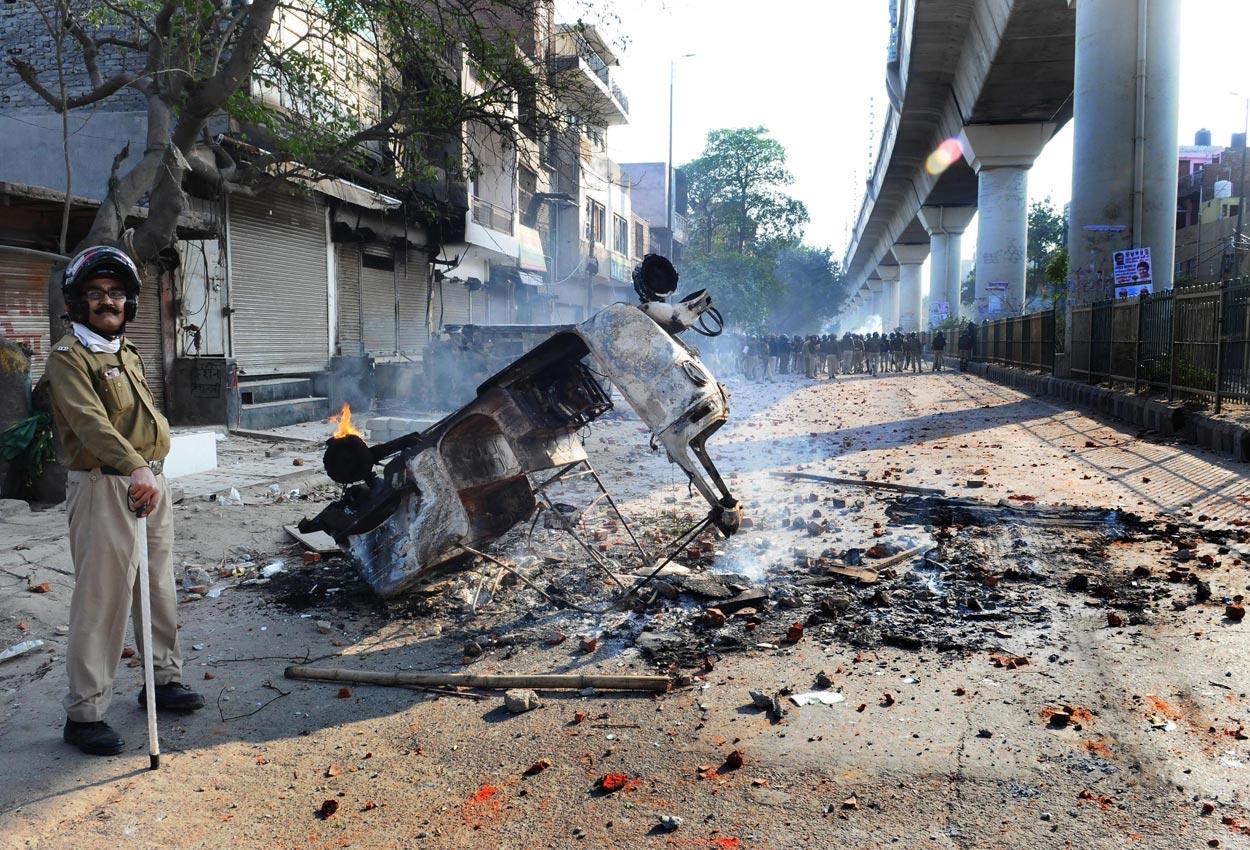
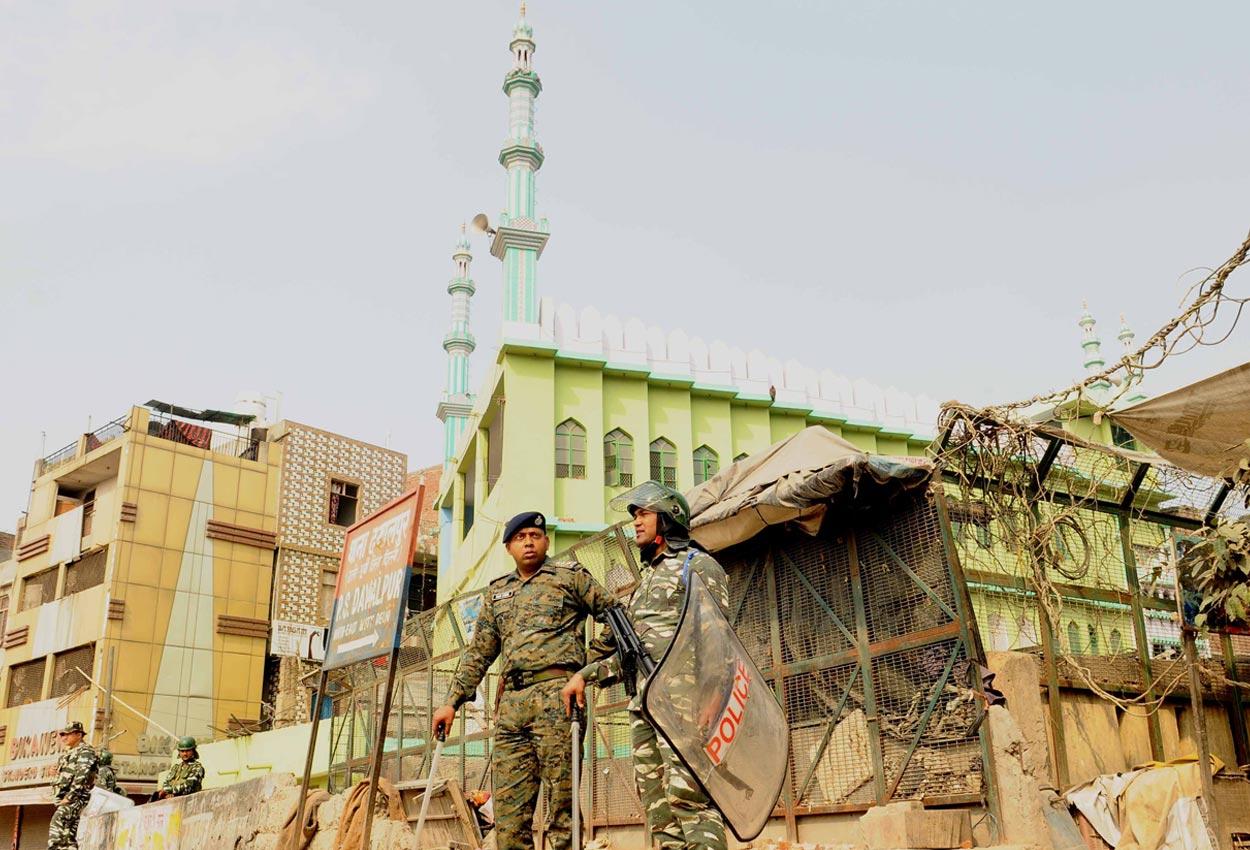
Severe indictment: The members of the fact-finding committee established that the Delhi Police did not act in a neutral manner
The report says that a campaign of hate against anti-Citizenship (Amendment) Act protesters, and more broadly against Muslims, had been a steady feature in political speeches and election campaigning in the months immediately preceding the violence. Speeches, statements and slogans by BJP functionaries characterised the protesters as traitors, enemies, and violent troublemakers, within a divisive Hindu-Muslim binary. Calls for violence against those labelled traitors, using the “goli maaro” slogan, were repeated by political leaders in election rallies, public demonstrations, and mass gatherings, with no censure.
Pot kept on boil
Delhi High Court described specific prominent speeches and utterances by political leaders as within the ambit of the crime of hate speech. The report also points out that sections of the television media, namely, six highly watched news channels, in the period under study mirrored the politicians’ hate narrative directed at anti-CAA protesters and Muslims, beginning from December 2019 and continuing into 2020.
Hindu nationalist figures, as well as local BJP party workers, further spread the hate messaging through social media platforms such as Facebook, WhatsApp and YouTube which were widely used to propagate divisive Hindu-Muslim narratives and calls for violence. It is a matter of concern that the examples presented in this report are only a small sample of the hateful content that was widely disseminated.
The committee concluded that the prevalence of hate significantly contributed to creating a climate in which a section of society became receptive to incitement and calls for violence against the Muslim community. The inadequate response to hate speech by the Election Commission of India (ECI), media regulatory bodies, and Delhi Police exacerbated this climate. There were significant warning signs of impending violence—the shooting attempts against anti-CAA protesters—that went unheeded.
When violence first broke out on February 23, it appeared to be between pro- and anti-CAA camps across the Maujpur-Jaffrabad Faultline. However, by then the steady vilification of the anti-CAA protests had conflated protesters and Muslims so closely that the stance against the anti-CAA protests, on the one hand, and anti-Muslim hate, on the other, had fused. The opposition to the protests had coalesced with viewing the socio-political assertion of Muslims against the CAA as a threat to Hindu identity. This was ramped up on February 23, with wide calls for mobilisation by figures in the public eye. The divisive dynamics began to be utilised locally to mobilise crowds and build pressure down to neighbourhood streets, with leaders exhorting their supporters to go in for show of force and direct action.
By February 23, the situation on the ground was ripe for a communal breakout. The anti-Muslim hate at the root of the pre-violence build-up carried over into the actual violence. Muslim identity, ranging from individuals, homes, businesses to places of worship, was targeted, the report says. In the complex dynamics of communal violence, this remained a running thread even as the violence snowballed, and mobs from both sides clashed. This mix of targeted as well as generalised violence resulted in deaths among both communities, with 40 Muslims and 13 Hindus being killed. This violence was also aided by instances of apparent police complicity, of which there were specific allegations.
The committee says, “It is important to recognise the targeting of anti-CAA protests as a significant element of the violence. From February 23 to 26, the sites of the anti-CAA sit-in protests dotted across north-east Delhi, including Chand Bagh, Kardampuri, Jaffrabad, Mustafabad and Khajuri Khas, were attacked and steadily cleared.
“It is our view that engineered hate, enabled by the complicity of state actors, culminated in violence towards cementing a firm sectarian divide. In this attempt to alter social relations, Muslim identity and agency stand noticeably diminished. This is an inevitable outcome of a politics of hate becoming embedded in the social fabric.”
Police complicity – Delhi
The report said that there should have been accountability for State failures. Considering the institutions present in Delhi, both state and Central, and the ease of movement for security forces, it is a legitimate expectation that a situation of communal violence in Delhi would be averted and promptly contained. The very fact that mass violence took place over four days in a district of the nation’s capital city—the seat of both the Government of India and the Government of Delhi—indicates glaring failures of constitutional duties.
The prevalence of hate significantly contributed to creating a climate in which a section of society became receptive to incitement and calls for violence
It was the Delhi Police’s role to respond to visible signs of brewing violence and avert the outbreak, and later to contain it from becoming a mass violence situation. The material analysed in the report demonstrates that Delhi Police failed to prevent the violence even though there were enough warning signs since January 2020, indicating a tense build-up. There were also instances of police complicity of varying degrees.
The Delhi Police Act, 1978, endows the Commissioner of Police in Delhi with a range of prohibitory powers to prevent riots or breaches of public order. These include orders prohibiting the carrying of weapons and arms, and the assembly of persons as “necessary for the preservation of public order”.
Section 33 of the Act gives the Commissioner of Police specific powers to issue orders towards preventing a riot or “grave disturbance of peace”. Likewise, the Code of Criminal Procedure prescribes a host of preventive powers in Chapter 10, which by virtue of Section 70 of the Delhi Police Act, 1978, accrues to the Delhi Police. Yet, the police failed to take any preventive or punitive measures to tackle the polarised atmosphere building up in the run-up to February 23. It is documented that the police were in receipt of intelligence alerts from internal sources of impending trouble in north-east Delhi on February 23 itself, the report says.
In their speech at Maujpur on February 23, political figures like Kapil Misra of the BJP went so far as to warn the police to clear the crowd in a couple of days, failing which direct action would be taken. With hindsight, it is clear this ultimatum came to be an immediate trigger for violence. The speech was delivered in the presence of the DCP, north-east district. However, the police took no action. Similarly, the police pronounced curfew orders a day too late when the violence had already engulfed the district. This proved to be ineffective, as attacks and acts of violence continued in spite of the imposition of curfew.
The report has recorded instances showing involvement of police personnel in acts of violence. These descriptions are backed by eyewitness, media and affected persons’ accounts. “On February 24, multiple instances of apparent police complicity were reported: police were seen with mobs attacking the anti-CAA protest site in Chand Bagh; firing tear gas at the tent housing the anti-CAA protesters in Kardampuri; encouraging mobs pelting stones and vandalising a store with a Muslim name in Yamuna Vihar. The police allegedly assaulted Faizan (leading to his death) and four other Muslim men in full public view on 24 February—a prime example of abuse of police power driven by prejudice.
“There is documented testimony and video footage of police appearing to beat worshippers and the muezzin of Farooqia Masjid in Brijpuri on February 25. Police personnel reportedly roughed up anti-CAA protesters while clearing the Khureji Khas protest site on February 26 and prevented those detained from meeting their lawyers. This limited, but credible, mass of information of police involvement is what has reached the public domain so far, while much more may still have to be unearthed.”
The committee was of the view that Delhi Police failed to prevent the violence and expressed serious concern at the instances of police complicity of varying degrees in the violence. It said the role of the police must be more critically examined to determine the full extent and nature of complicity, including whether the lack of effective preventive action constitutes complicity as an act of omission.
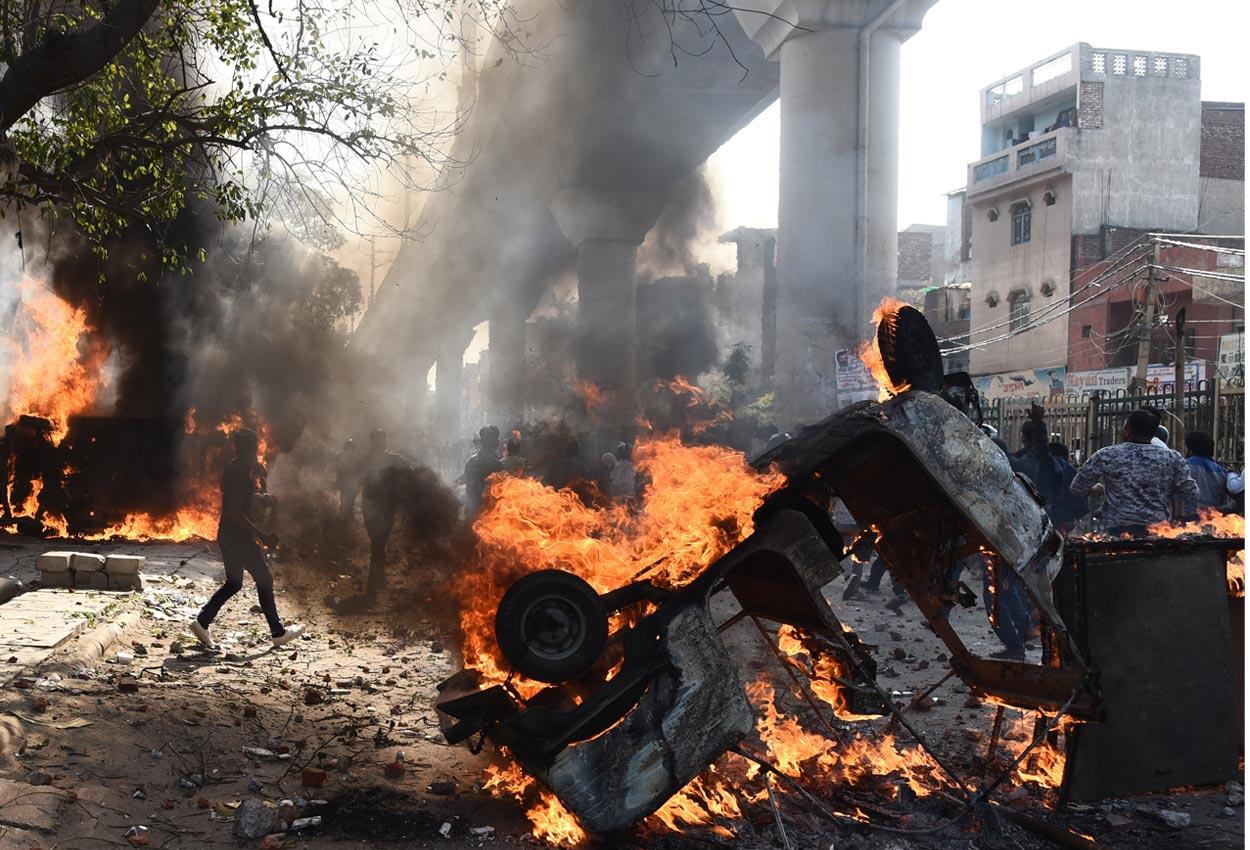
The report has recorded instances showing involvement of police personnel in acts of violence. These descriptions are backed by eyewitness accounts
“Towards that end, it is imperative that the investigation is entrusted to a body other than the Delhi Police, and which is not under the direct control of the Ministry of Home Affairs. In the Committee’s view, police complicity can be properly investigated only through a Court-Monitored Investigation.” As per the constitutional scheme awarding special status to the National Capital Territory of Delhi, the MHA has effective control of Delhi Police. Moreover, the MHA also oversees central paramilitary forces.
With these crucial roles, the Central government holds the primary responsibility to protect the lives and property of the people of Delhi. In spite of all the resources at its command, the MHA’s interventions failed to contain the violence in north-east Delhi, the report says. Repeated assurances by police top brass and government officials that the situation was under control did not match the pace and visibility of violence on the ground.
Inadequate force deployment
There was scarce deployment of police and security forces. As the parent ministry, the MHA plays a key role in ensuring adequate police deployment in Delhi. Even though it can order in central paramilitary forces whenever necessary, it seems the MHA failed to ensure increased police deployment in north-east Delhi during the initial phase of the violence. “This was a prime factor in the galloping spread of the violence. While announcements by police and political leaders of greater police deployment were made on February 24 and 25, official data suggests that increased deployment only took place on February 26. In the charge sheet filed in FIR 59/2020, a chart depicts the details of deployment of Delhi Police and Central Armed Police Forces (CAPF) to north-east, east, and Shahadra police districts over the days of violence,” the committee said in its report.
Additionally, the Delhi government, which is directly responsible for ensuring relief and compensation, failed to discharge this role in a meaningful way
This tallies to show that the numbers of police personnel deployed were not suitably increased on February 24 and 25, which is when the maximum number of distress calls were received by police stations. In fact, on February 24, the numbers of both civil police and paramilitary personnel were less than on February 23. It was only on February 26 that there was a perceptible rise in deployment—the day that the National Security Adviser declared the situation “under control”.
The gap was amplified in the light of police internal alerts advising increased deployment from February 23. The Special Branch and intelligence wing of Delhi Police itself had sent “at least six” alerts on February 23, through wireless radio messages to the north-east district and the police leadership.
The first alert advised increasing deployment and police presence in the area after a political figure tweeted his call to supporters to assemble at Maujpur Chowk at 3 p.m. Alerts were later sent after stone pelting began in Maujpur and mobs were seen mobilising. “People who sought police help got little or no response. A journalistic investigation revealed that Delhi Police received about 13,200 distress calls during the four days of violence, with the number of calls rising each day. It recorded that the number of calls to the police control room rose each day, rising from 700 on February 23, to 3,500 calls on February 24, rising further to 7,500 the next day, before reducing to 1,500 calls on February 26.”
However, police station registers on action taken on these were found to be blank. Records show numerous instances of the police not responding to calls from neighbourhoods, schools and places of worship, on each day of the violence. With the information on hand at the outset, it is a grave failure on the part of the Delhi Police leadership and the MHA that police and security force deployment was not immediately stepped up, the report says.
“More recent events in Delhi testify to how rapidly security force deployment can take place in the city. There was speedy and continued deployment of hundreds of police and additional companies of paramilitary forces following an incident of communal violence in Jahangirpuri (north-west Delhi) in April 2022.”
In preparation for a demolition drive in the area, the police mobilised 1,500 personnel virtually overnight (against a request for 400); in addition, a few companies of the Central Reserve Police Force and Indo-Tibetan Border Police were also provided. When such mobilisation is possible, it is inexplicable as to why the needed deployment was not ensured in north-east Delhi on February 23 itself. This situation begs serious appraisal of the Central government’s failure to respond to the violence commensurate with its resources and capacity.
“The Committee concludes that a comprehensive, independent review of the known intelligence, alerts, total police and other security force strength, and sequence of deployment across affected areas, from the breakout and over the days of violence, is urgently required.”
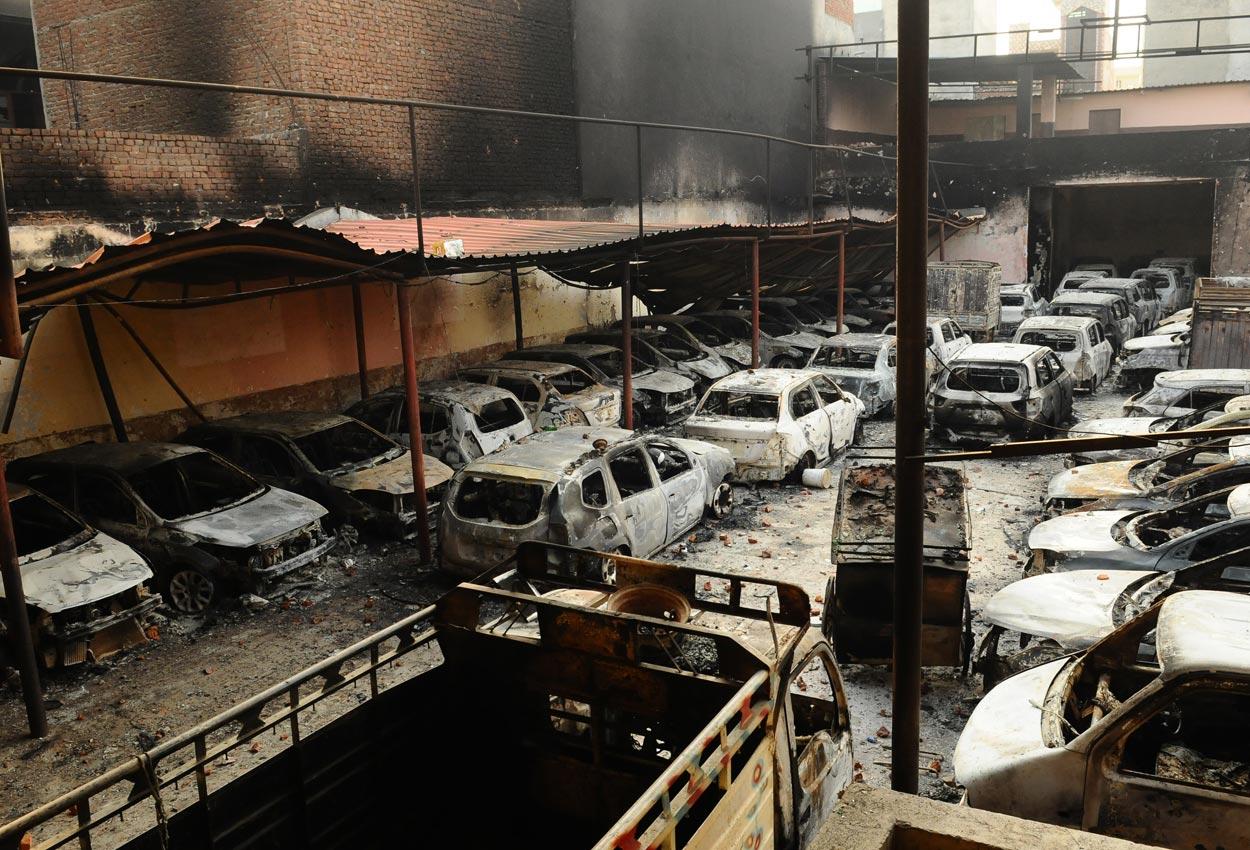
Delhi government inaction
“The Committee finds that the Government of Delhi did precious little during this entire time to mediate between the communities, even with the warning signs. While the Delhi Government’s ability to control violence is limited as the administrative control over the Delhi Police remains with the Central Government; it failed to exert the role of civic mediation, and statesmanship, to calm the situation. The government, and its popular Chief Minister, voted in through a landslide victory only a few days before, displayed an entirely ineffectual, seemingly helpless stance rather than doing all it could on the back of its emphatic mandate,” points out the report.
Additionally, the Delhi government, which is directly responsible for ensuring relief and compensation, failed to discharge this role in a meaningful way. Government agencies failed to extend effective relief during the days of violence, the committee says. The lack of adequate relief camps and the sudden closure of the Eidgah camp would have left many vulnerable people with no access to shelter. It was for the Delhi government to ensure expeditious payment of compensation for harm and losses suffered by the victims of the violence.
However, the approval and delivery of compensation has been riddled with difficulties and delay. Where decisions have been made, there are concerning patterns of compensation amounts not matching the harm suffered, or compensation being rejected without adequate basis. A confluence of factors and state failures led to a situation in which the violence that overtook north-east Delhi was neither prevented, and once it commenced, not stemmed from spreading.
“This Committee finds that a Commission of Inquiry ought to be set up for an impartial inquiry to establish the factors that led to the violence and issues of accountability and reparations in its aftermath. We would hope such a Commission through its functioning would take steps towards restoring faith in the rule of law by getting to the truth. It is crucial that the terms of reference and the choice of the Chairperson for the proposed Commission of Inquiry assure the affected communities of its independent and effective functioning.”







